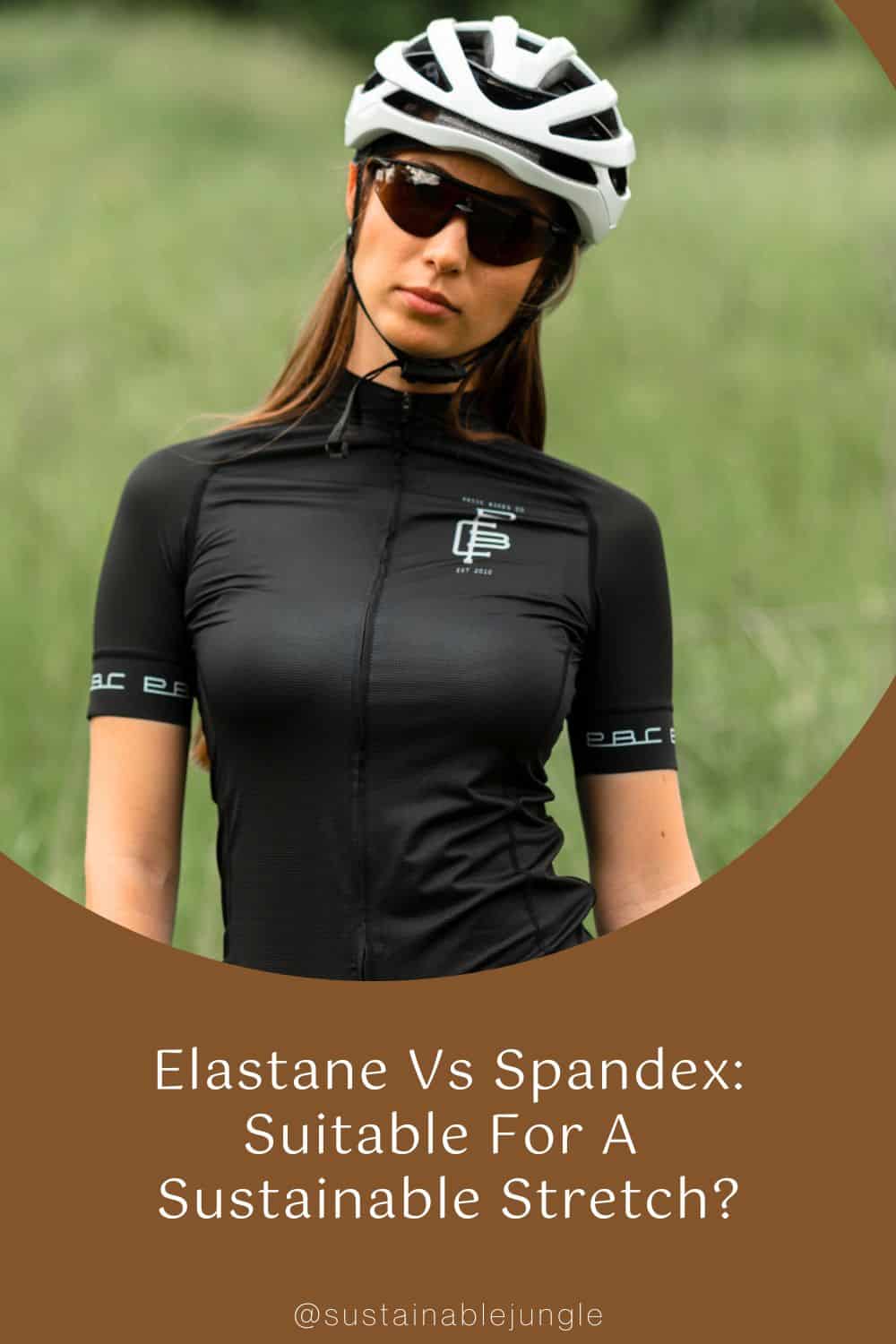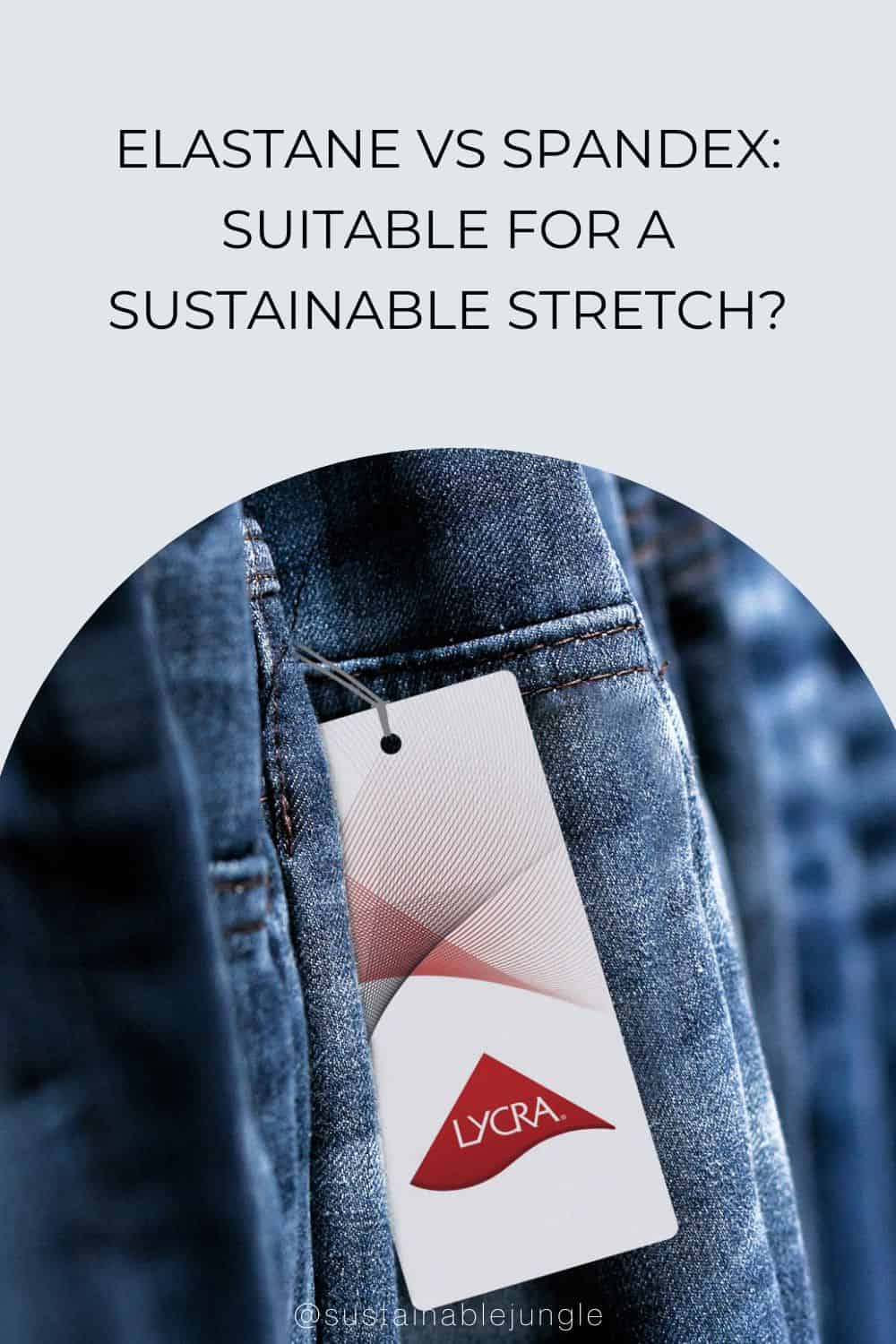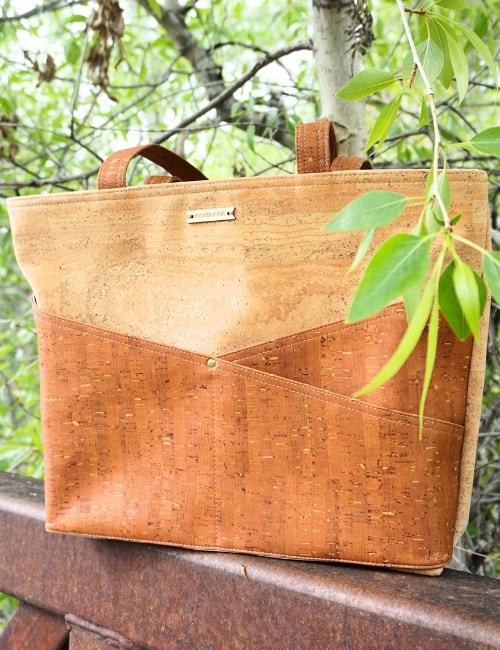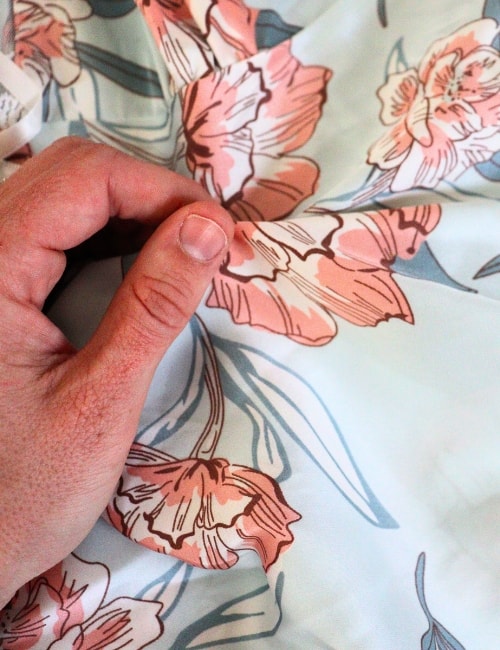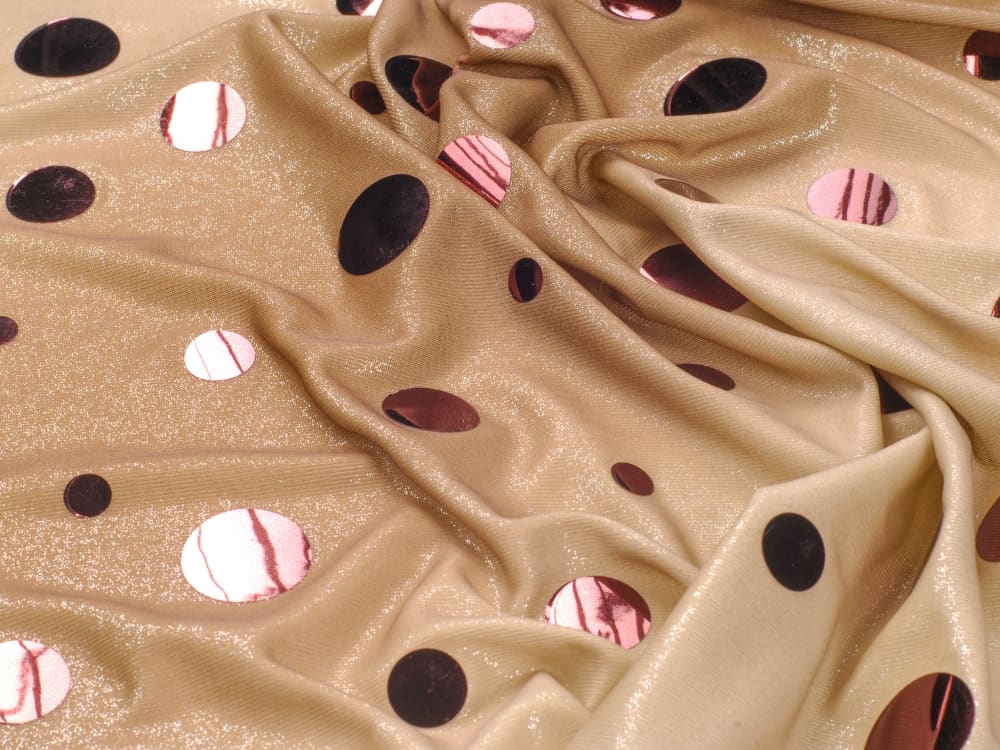
Elastane Vs Spandex: Suitable For A Sustainable Stretch?
If you’ve ever worn socks, underwear, bras, activewear, or stretch jeans, you’ve almost certainly worn elastane fabric.
Elastane (as most of you know) is a synthetic material known for its stretch, making it a non-negotiable fabric in most sustainable yoga clothes. But there’s another flexible fabric you may have seen on garment care tags: spandex.
But when you stack up elastane vs spandex, what’s the difference? Is spandex the same as elastane?
They’re actually the exact same thing. Both elastane and spandex (and even Lycra) refer to the same material—or rather elastance is the material, and Lycra, elastane, and spandex are just different brand names.
Beyond the properties of this fabric—whatever its name—is elastane a good fabric or one stretching our planet’s health in the wrong direction?
Let’s stretch our minds and flex our way deep into the question: just what is elastane in fabric?
The Full List For Elastane Material Vs Spandex
1. What Is Elastane Fabric Made Of?

Elastane, also known as spandex or Lycra, is an elastic (obviously) synthetic fabric.
Technically speaking, it’s a general term for any polyether-polyurea copolymer fabric.
Uh, what?
Just what is spandex made of?
It’s composed of a human-made blend of about 85% polyurethane (PU) and polyethylene glycol.
In 1937 in Germany, Otto Bayer invented polyurethane, a long-chain, petroleum-based polymer completely devoid of organic materials.
First used as an elastomer in German fighter planes for heat and shock insulation, the substance quickly found a way into many of the plastics we still rely on today.
If you’re still confused over what material is elastane, think of polyurethane as a lab-grown rubber alternative, one that doesn’t require sustainable forestry experts or harvesting.
While textile use wasn’t the first priority for polyurethane, it was the DuPont Corporation that decided it would make a fabric with stretch.
In the late 1950s, a decade of DuPont research later, elastane fabric was born.
2. Elastane Vs Spandex Vs Lycra
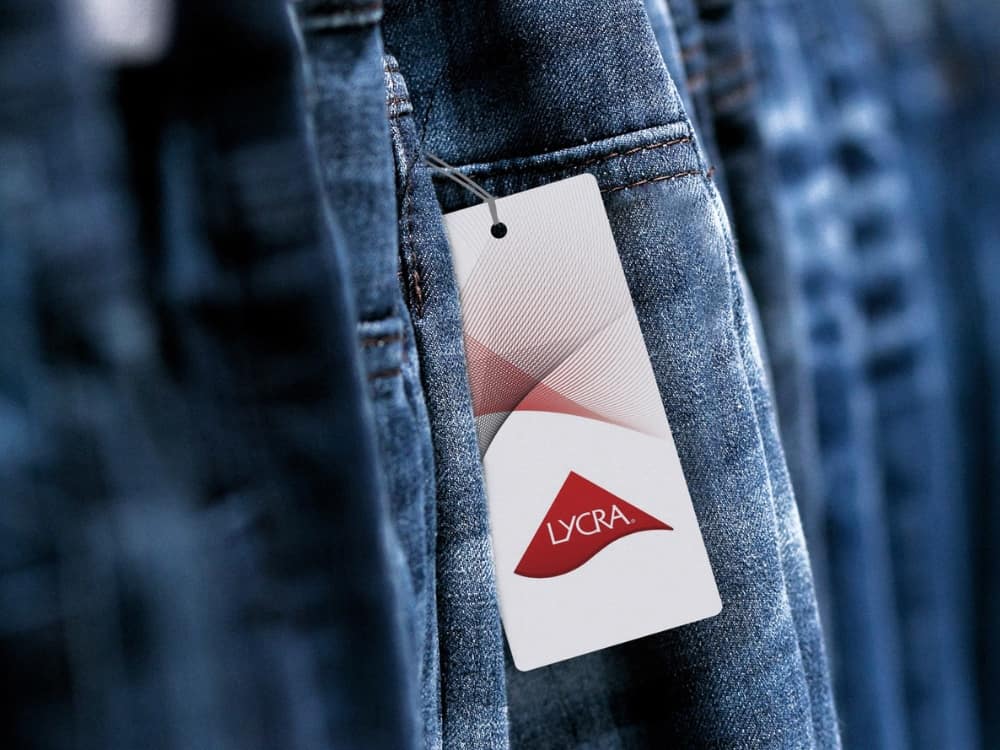
Polyurethane became popularized by the DuPont Corporation as a helpful elastic fabric. They branded their elastane with the name LYCRA® and used it for not just apparel, but also industrial applications.
So, what’s the difference between elastane and spandex?
Nothing.
Unlike cotton vs rayon which are very different materials, here they’re all the same. In this way, spandex and elastane and rayon fabric and viscose fabric are actually an apt comparison.
So is elastane as stretchy as spandex? Is elastane the same as spandex?
Yes and yes—starting to get the picture?
The only difference is branding, and thus where you’ll hear the terms used differs.
While not a hard and fast rule, elastane is typically uttered more in Europe while spandex is an Americanism.
While spandex and elastane are more generic terms, Lycra is typically only used when referring to the LYCRA® brand elastane.
3. Properties Of Spandex Vs Elastane
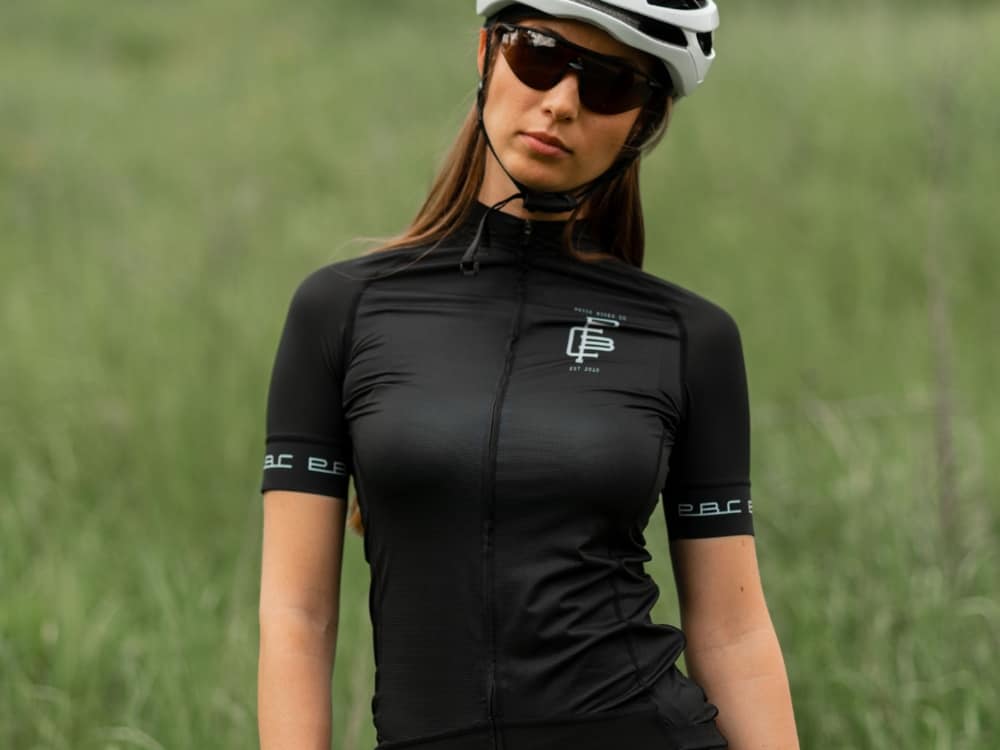
First found in bras, jockstraps, and activewear of the 1960s, we know how that elastane is stretchy, no matter what it’s called.
Elastane = elastic.
Spandex = an anagram of “expands”.
Simply put, there’s just nothing as elastic as elastane—a fabric that can stretch up to 500% its original length!
Today, elastane is found in roughly 80% of the garments worn in America.
As evidenced by the YouTube sensation “Activewear” and the replacement of business casual pants with dress slack lookalike yoga pants, we have an insatiable hunger for elastane—one that is likely to continue to grow.
In 2019, the global elastane fabric market was valued at $7.3 billion, and is projected to see a compound annual growth rate of 2.2% between now and 2027.
But it’s not just the stretch that’s stealing the show.
Not only is elastane fabric stretchy, but it’s also relatively durable, lightweight, adaptable, and resistant to oils, lotions, detergents, sweat, and damage from sewing. Yet another of the useful properties of spandex is the ability to retain its size and shape.
In other words, it keeps the sag out of your sustainable sports bras, sustainable underwear, jeans, yoga pants, socks, sustainable bike shorts, leggings, or anything else that requires a snug and motion-ready fit.
So what are the disadvantages of elastane?
To answer that, let’s take a look at elastane fabric vs spandex from a planetary perspective.
4. Elastane Vs Spandex Sustainability
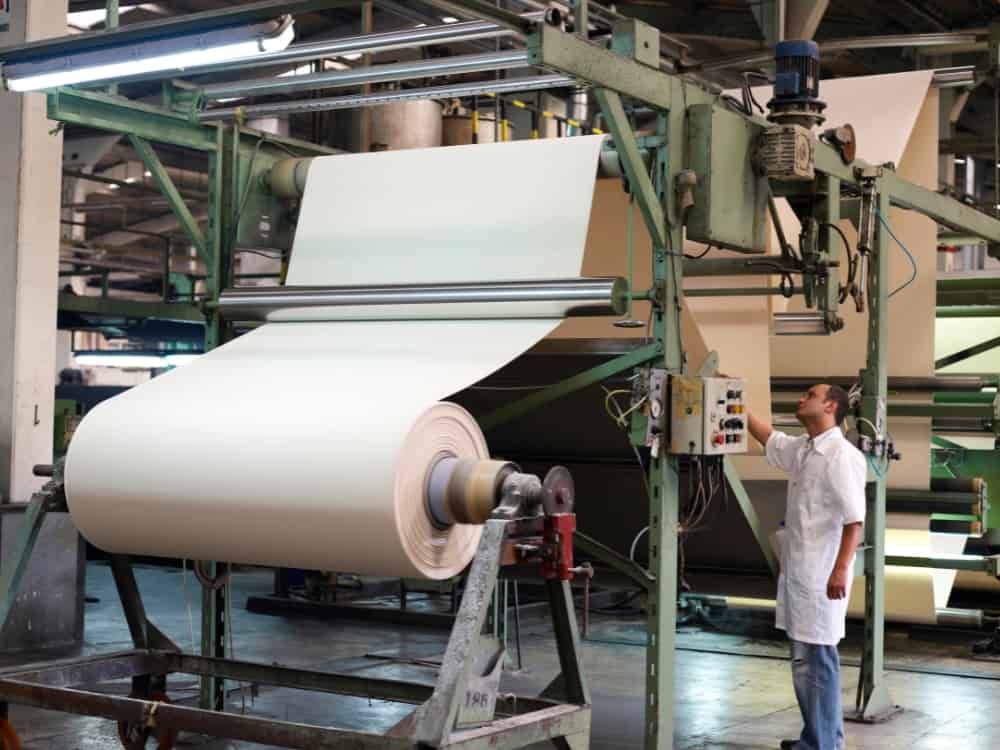
Doing yoga in your elastane-happy leggings may make you feel closer to nature, but is elastane good for it?
Off the bat, spandex won’t be making it into our list of sustainable fabrics anytime soon.
First, spandex’s manufacturing process can consume significant energy and water resources.
It’s also made from a range of synthetic fibers and requires a lot of toxic chemicals to produce—but is elastane toxic? Is it safe to wear?
Polyurethane, the main precursor for elastane, is not one of the most dangerous types of plastic (at least when compared to the likes of PVC). Still, it’s “reasonably anticipated to be a human carcinogen,” according to the NIH’s National Toxicology Program.
Isocyanates, another raw material required in order to make polyurethane, have been linked with respiratory issues like childhood asthma.
For anyone who has leggings to match an event, cartoon, or day of the week, you’re probably aware of the dyes that are typically used to process the fabric.
While Milky Way yoga pants look cool, they may also be releasing hazardous chemicals into work environments, soil, and waterways.
Then, after that pesky thigh hole takes over, and the leggings are discarded, the non-biodegradable elastane ends up in the landfill.
However, there are some bleak bright spots to consider.
While elastane is a synthetic fabric, it’s not like the synthetic fiber nylon, which releases nitrous oxide – ~300x more potent than CO2 at warming our planet. It also doesn’t shed microplastics as vociferously as polyester fleece—though you should still use a Guppy Friend when washing.
By far the biggest problem is our utter dependency on it. It requires quite a stretch of the imagination to consider a world—let alone a fashion industry—without it.
The properties of elastane are also unique, it simply can’t be found elsewhere. Short of ditching our underwear, socks, and other comfy clothes, we’re stuck with this form of stretch—for now.
But when we approach it with a more holistic understanding, there are some ways spandex can be used responsibly.
5. Sustainable Elastane Fabric Innovations

What about recycled spandex?
Until very recently, finding recycled spandex or elastane in clothing was nearly impossible.
While the recycling of spandex garments is possible, it’s not as straightforward as recycling natural fibers or even most other synthetic fabrics.
Even from the most eco-friendly clothing brands, it’s not uncommon to see garments made of 90% recycled polyester, combined with virgin elastane.
However, we’re starting to see a shift in this.
Spanflex was the first to make recycled elastane yarn from fabric production waste. It combines elastane waste with recycled plastic bottle polyester.
Spanflex CF-Eco Fabric has an energy consumption rating and carbon footprint that’s less than half of its virgin counterpart. It even bears the recycled content certification by the Global Recycled Standard (GRS).
The brand LYCRA® itself is putting in considerable effort to innovate their line of spandex fabrics with more eco-friendly properties, including higher percentages of recycled fibers, incorporation and plant-based materials, and enhancements in performance and durability.
They are two we’re particularly excited about:
- LYCRA® EcoMade: Made with 20% pre-consumer spandex manufacturing waste. LYCRA® claims it maintains 100% performance value as virgin LYCRA®. 20% is still a relatively recycled content percentage, but it’s a start, and we hope that as the technology advances, it will increase.
- LYCRA® T400® EcoMade: A “bi-component polyester fiber” that’s stretchy and made with 50% recycled PET bottles and 18% renewable plant-based materials (namely corn-derived dextrose).
So which is better: elastane or Lycra?
Well keeping in mind these more sustainable innovations, Lycra is looking promising.
But that’s not all that is happening on spandex’s sustainability front.
In 2009, a San Diego-based startup made spandex from cane sugar or sugar beets converted into commercial-grade 1,4 butanediol (BDO), one of the types of plastics commonly used in spandex.
In 2016, researchers found that isocyanates (one of the precursors to make polyurethane) could be made from plant materials. While the finished fibers weren’t as strong as spandex, it’s a big step toward providing a better alternative.
While we expect it’ll still take time for these to be adopted on a wider scale, we’re already starting to see our favorite brands incorporate these new more sustainable synthetic fabrics for stretch.
6. How To Care For & Dispose Of Elastane & Spandex Fabric
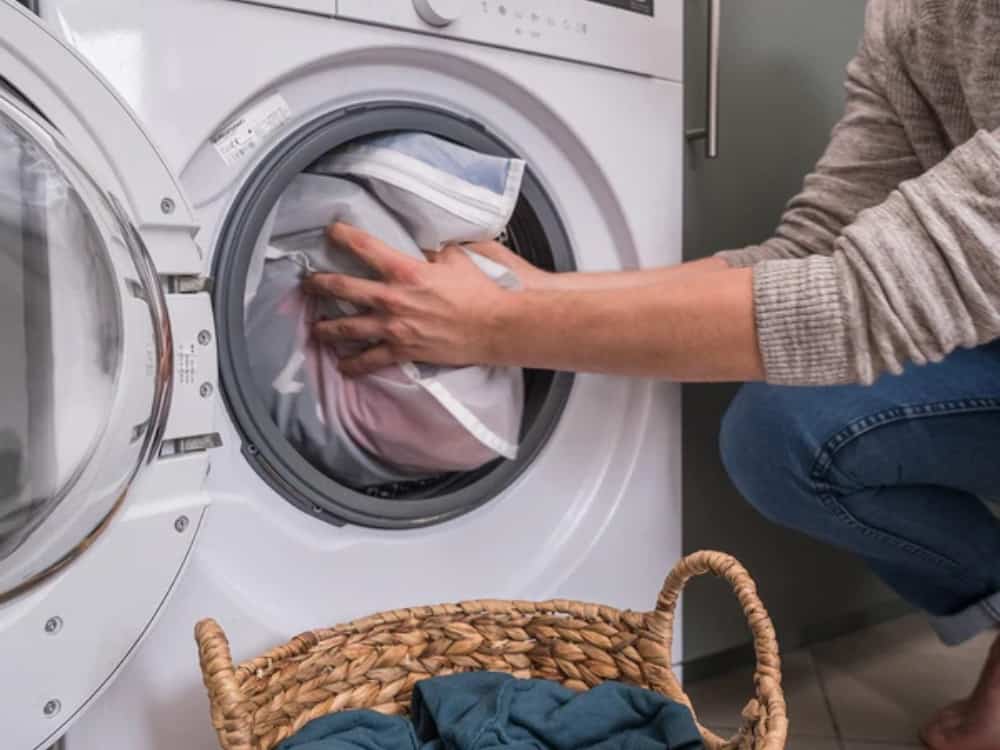
One reason why there is so much less recycled spandex/elastane on the market is because it’s extremely difficult (if not impossible) to recycle from other garments, due to the fact that it’s always blended with larger percentages of other fabrics.
To create recycled spandex, old spandex garments or products need to be broken down into their original polymer form. This process requires separating spandex from other natural or synthetic materials in the fabric (including dyes and finishes).
Achieving a high level of purity in the recycled spandex can be difficult, as even small impurities can affect the quality and performance of the new spandex.
Recycling processes can also alter the mechanical properties of the spandex fiber, making it less elastic or durable than virgin spandex. Maintaining the desired stretchiness and strength while using recycled materials can be technically challenging.
This is unlike polyester or nylon garments, which can readily be melted down and respun into new yarns.
The best way to dispose of elastane is by simply not disposing of it. Get as much wear out of elastane-containing garments as possible—-which means knowing how to properly care for it.
Caring For Elastane Clothing
Though suited for athletic wear, the stretchy material will need to be washed a little more frequently because of its low breathability and the tendency to trap moisture and odor.
Since elastane is synthetic with a relatively low melting point (450°F, though heat can start negatively affecting it at 350°F), that makes this task a little tricky.
To get around these sweaty setbacks, spandex is often combined with materials like polyester and cotton. This decreases elastane’s heat sensitivity, but special care should still be taken not to permanently damage the fabric.
- Wash elastane-containing garments in cold water (lukewarm if necessary)
- Hand wash if possible to avoid excessive stretching
- Never use chlorine bleach
- Opt for a mild, natural laundry detergent
- If using a machine, use the delicate cycle
- Avoid using a machine dryer
- Do NOT iron
- Wash with a Guppy Friend wash bag to capture microplastics
Elastane Garment Disposal
When those eco-friendly socks and ethical leggings finally give out, look for responsible disposal and upcycling ideas in our guides on what to do with old clothes, what to do with old socks, and what to do with old underwear.
If a garment is made with natural fibers (hemp fabric, cotton, linen, wool, cashmere, etc.) and just 5-10% elastane, some consider it to still be compostable.
However, keep in mind that the elastane itself (being an inorganic material) is not biodegradable and would need to be removed from the finished compost.
Depending on how long it’s left, it may also release microplastics while separating from its organic counterparts.
7. Brands Using Sustainable Elastane / Spandex
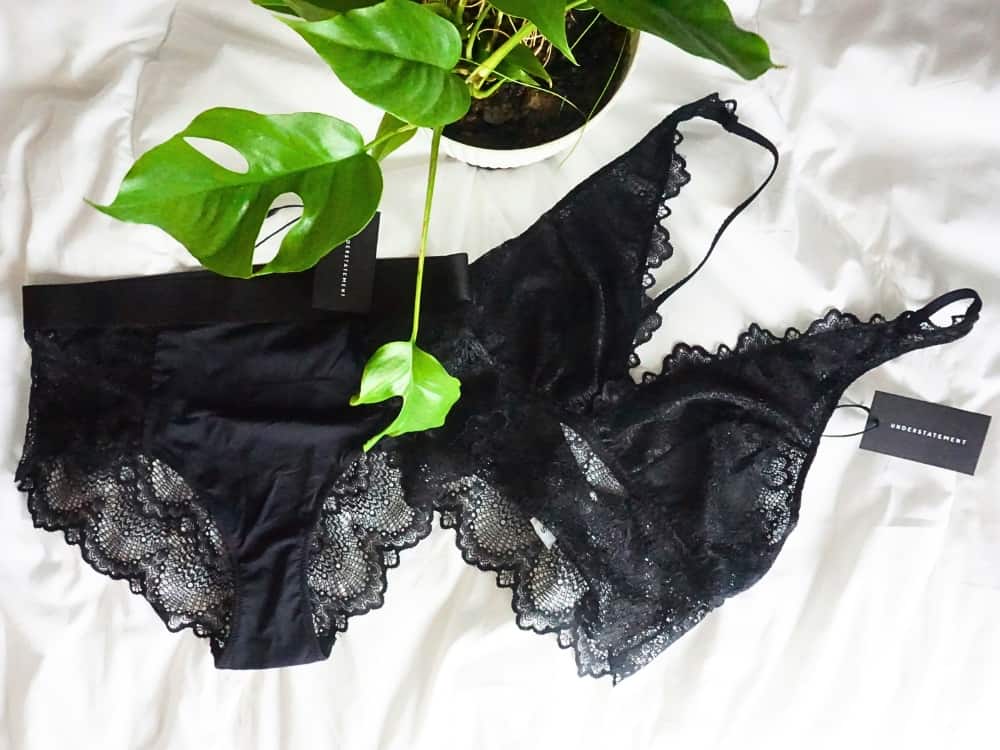
When blended with sustainable textiles like organic cotton, hemp, lyocell, or modal fabric, it can improve elastane’s sustainability.
According to the Global Organic Textile Standard (GOTS), elastane can still be used in small quantities (10%) and the finished garment can still be considered organic.
So while some stretch factor is necessary in certain types of garments, minimal content is optimal to make this not-so-sustainable fabric a toe-touch more eco-friendly.
There are a few brands who don’t want to stretch out their use of spandex and so reduce its use as much as possible:
- Hernest Project: They craft sustainable pajamas and loungewear which contain <2% recycled elastane per garment, maintaining biodegradability.
- MUD Jeans: All stretch models of their sustainable jeans contain 2% GRS-certified recycled elastane and no virgin elastane.
- Understatement: They give their sustainable lingerie some comfortable stretchy fabric in the waist and straps, they recycled elastane fibers, combined with plastic bottles and deadstock synthetic material.
- Boody: Organic and closed-loop bamboo viscose is used in garments like ethical activewear, underwear, and organic bras—but it doesn’t provide stretch like spandex. While not recycled, elastane here normally makes up around 6-7% of the garments to ensure it’s still biodegradable.
Did you know we Have a Newsletter?
We cover the latest in sustainable living, fashion, zero waste, beauty, travel, finance and more…
Final Thoughts On What Is Elastane Vs Spandex?
So, elastane fabric: good or bad?
While the Lycra vs spandex vs elastane confusion is an easy one to solve (they’re the same!), the spandex vs elastane vs our planet argument isn’t so much.
When it comes down to it, elastane material is made from fossil fuels and releases microplastics into our environment. Still, our wardrobes would be simply inflexible without it, especially considering there’s nothing else like it.
Given that elastane is so ubiquitous in our clothing, we’re admittedly holding out for a greener alternative hopefully in the near future.
In the meantime, keep your own consumption of elastane to a minimum and look for garments that do the same with 10% or less of the fiber.
If you’re in need of a new pair of yoga pants, consider keeping elastane out of landfills longer by shopping second hand stores first.
Lastly, help us stretch the minds (and the stretchy clothing) of others in a more sustainable direction by giving this article a share.
Pin these:
